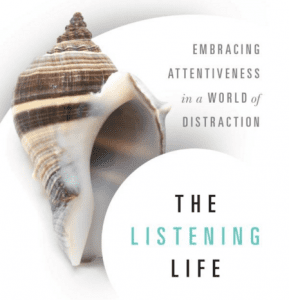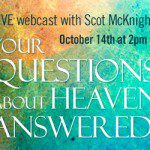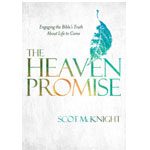 Kelly M. Kapic and Bruce L. McCormack, Mapping Modern Theology: A Thematic and Historical Introduction (Baker, 2012). Reviewed by Wes Vander Lugt
Kelly M. Kapic and Bruce L. McCormack, Mapping Modern Theology: A Thematic and Historical Introduction (Baker, 2012). Reviewed by Wes Vander Lugt
Modern theology is a vast terrain, and while many books accurately describe the landscape, few successfully guide the reader in their travels so they can enjoy the ride, remember what they see along the way, and even tell others how to get from point A to B. The unique achievement of Mapping Modern Theology (MMT) is showing the development of particular doctrines within modern theology, highlighting the theologians who carried these conversations forward. Other volumes contain thematic essays on modern theology, such as the five essays in The Blackwell Companion to Modern Theology(2004), but they lack the historical perspective present in many of the essays in MMT. And whereas The Modern Theologians (3rd ed, 2005) contains some valuable thematic material, it only traces developments since 1918 instead of covering the entire scope of modern theology over the last two hundred years.
This naturally raises the question: what is modern theology? McCormack addresses this question in the first essay, describing modern theology as a shift from accommodation to mediation, a shift from defending orthodoxy based on divine accommodation in Scripture to using speculative categories and norms as conceptual frameworks to mediate theological discovery and expression. Furthermore, in the wake of Immanuel Kant’s separation of the empirical (phenomenal) and conceptual (noumenal) realms, theology became increasingly speculative and grounded in anthropological metaphysics. These characteristics are clearly represented by Schleiermacher, whose ultimate norm was the “feeling of absolute dependence.” Although many consider him the father of modern theology, McCormack claims that Hegel is more deserving of that title, since his speculative theology officially “bid farewell to classical theism.”
After this insightful introductory essay, one might expect the following chapters to map the norms used by various modern theologians in exploring particular doctrines. While some essays do this in part, the editors explain that each author was given considerable latitude in crafting their contributions, and the ensuing diversity makes the collection thoroughly fascinating but varyingly satisfying. In my perspective, the most insightful essays are those that map the historical development of a particular doctrine using creative categories and conceptual grids. For sake of brevity, I will summarize a few essays that I think provide this kind of constructive, compelling map of particular doctrines within modern theology while offering some comments of constructive criticism.
One example is the survey of modern trinitarian theology provided by Fred Sanders, who identifies three major regions on the map: history, experience, and retrieval. Hegel, Moltmann, Pannenberg, and Jenson are theologians who link their trinitarian theology closely to history, and Sanders identifies process theology, open theism, and panentheism as trends that share this commitment. On the other end of the spectrum lies trinitarian theology that begins with human consciousness or experience, including the work of Schleiermacher, LaCugna, Elizabeth Johnson, Sarah Coakley and others who follow a liberationist approach, such as Leonardo Boff. A third approach is retrieving trinitarian theology as confessed by the church throughout the centuries while articulating it faithfully in a modern context, and here Sanders highlights Karl Rahner and Karl Barth. While the “two Karls” often get the spotlight for retrieving or renewing trinitarian theology, Sanders also mentions several other theologians—Pope, Hodge, Bavinck, and Hall—who kept orthodox trinitarian theology alive in previous decades. While overall this essay is immensely helpful, one omission is the work of Hans Urs von Balthasar, who not only achieved a dramatic synthesis of history and experience (more so, in my opinion, than Karl Rahner, who Sanders mentions in this regard), but also was a proponent of retrieval in the area of trinitarian theology. Not mentioning Balthasar in a chapter on modern trinitarian theology is like not referring to Brecht when writing about modern drama: the map is not complete without them.
Another creative and satisfying map is the way Kelly Kapic plots modern anthropology, covering such diverse figures as Kant, Schleiermacher, Darwin, Freud, Troeltsch, Orr, Barth, and Zizoulas. He describes the development of this doctrine as a “dance between theology and science” and an attempt at a more holistic portrait of humanity. While the survey he offers is incredible insightful, a few clarifications might be helpful in ascertaining if modern anthropology constitutes a holistic project. Taken together, each contribution to modern anthropology may contribute to a more holistic portrait of humanity, but taken separately, it seems that modern approaches gravitate toward reductionism. This corresponds with McCormack’s observation that modern theology is governed by a single norm, and if modern anthropology is interpreted according to this norm (like Schleiermacher’s feeling of absolute dependence, Darwin’s natural selection, or Freud’s ego), what follows is a reduction of anthropology under the terms of this norm. Even the more theological anthropologies of Barth and Zizoulas may be viewed in this light to the extent that christological, actualist revelation or trinitarian relations function as fundamental norms. As such, a more holistic anthropology can and should be constructed by drawing from a variety of modern anthropologies, but this holistic sensibility may be more premodern or postmodern. Kapic represents such a position when he concludes that “human creatures are complex physical and psychological beings who are best understood in relation to their Triune Creator and fellow creatures.” With this statement, Kapic is not as much following the trajectory of modern theology as he is preserving orthodox premodern theology while gleaning the best from modern theology in order to propose an appropriately postmodern anthropology.
If space allowed, I would most certainly want to highlight Kevin Vanhoozer’s excellent essay on the atonement, where he outlines seven trajectories in modern discussions of Jesus’ death. In addition to describing these trajectories, he prescribes a promising way forward—“the atonement as triune covenantal mediation”—which draws together several trajectories while keeping the gospel at the center. I would also like to feature the most creative essay in the volume, Telford Work’s contribution on pneumatology, where he expands on the map metaphor to offer a survey of this doctrine in capital cities (where classic formulations rule), abroad (areas outside orthodoxy), frontier settlements (new social settings), border towns (ideological reactions to modernity), and the cosmopolis (where old and new worlds intermingle and form new, imaginative proposals). This essay alone is worth the price of the book. But I would be remiss to finish this review before mentioning Brian Brock’s essay on Christian ethics, which in my perspective is the best survey of its kind. Drawing noticeably from essays by Stanley Hauerwas and Sam Wells in the The Blackwell Companion to Christian Ethics,, Brock identifies the primary pitfall of modern Christian ethics as working within the confines of secular reason rather than beginning with the particularly of Jesus Christ and the Christian gospel, as Yoder and Hauerwas have shown in their work. Brock may be more bold in showing his theological cards than other authors in the volume, but this is refreshing because it provides not just a topographical map describing modern Christian ethics but a road map guiding readers through a field alarmingly replete with non-Christian ways of thinking and doing.
It is difficult to due justice to such a rich book with a short review, but I hope the previous paragraphs have shown that Mapping Modern Theology provides the kind of map that will not only show the lay of the land, but one that will help readers navigate their own journey of “faith seeking understanding.” Like any map, however, it is impossible to represent reality perfectly. As I mentioned above, there are inevitable and sometimes lamentable omissions, but the overall map is certainly laudable. In addition, the map may have been clearer if there had been some discussion regarding the extent to which “modern theology” overlaps with “postmodern theology,” as many essays encroached into postmodern territory. Of course, these labels are notoriously ambiguous, but some clarification would have been helpful in distinguishing these essays, for example, from the thematic essays in The Cambridge Companion to Postmodern Theology (2003), which even shares some of the same contributors. Despite some fuzzy edges and occasional gaps, this book provides a valuable map for every student of theology. It will be beneficial for those seeking an overview of modern theology as well as a crucial resource for systematic theology courses. For anyone interested in theology, this is an essential book for your shelf, but like the best maps, it is not meant to collect dust and should be underlined, notated, and dog-eared through continual use and enjoyment.











